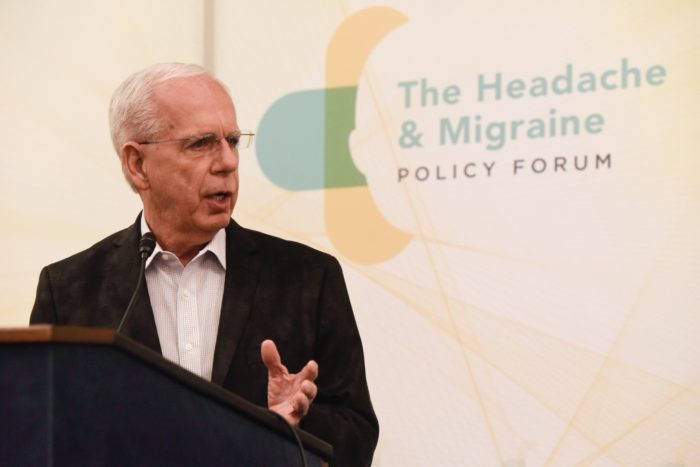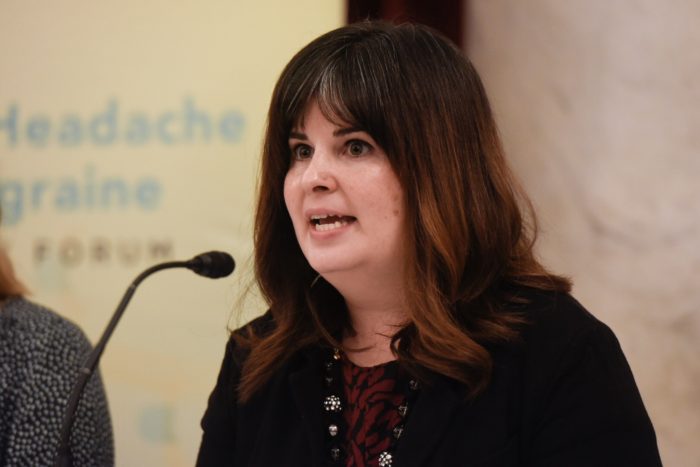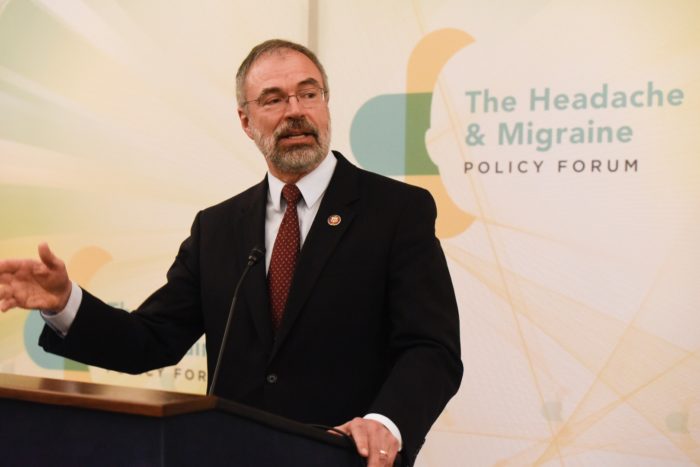Policy Event Spotlights Migraine & Disability Issues
February 14, 2019
It might mean swapping out fluorescent light bulbs, implementing a flexible work schedule, or providing a dark room where staff can recover from migraine attacks.
Workplace accommodations for employees with headache disorders and migraine disease can be both simple and life-changing. It can also put employers in compliance with federal law, as a Capitol Hill policy panel hosted this week by The Headache & Migraine Policy Forum made clear.

“You’re all covered by the [Americans with Disability Act],” former congressman Tony Coelho announced to a crowded room of headache advocates. “I know,” he emphasized, “because I wrote it.” The former representative from California has battled epilepsy throughout his life, a struggle that spurred his leadership on disability issues. He authored the landmark Americans with Disabilities Act while serving in Congress and today chairs the advocacy group Partnership to Improve Patient Care.
As the event made apparent, the Americans with Disabilities Act has been a watershed. The U.S. Census reports that roughly 800,000 more people with disabilities have joined the country’s workforce as a result of the bill, which was signed into law by President George W. Bush about 25 years ago. But challenges remain.

Just ask patient advocate Angie Glaser. Today she serves as content editor for the online wellness community Migraine Again. But past employment endeavors were less successful, largely because they lacked the necessary accommodations for people with migraine. Headache attacks left Glaser nauseated, fighting both blurred vision and the feeling that her brain was “in a bowl of water.” Symptoms cut her 40-hour workweek short. That meant using weekends to catch up on work and taking vacation days to recover from attacks.
“My manager was not unkind,” Glaser recalled, “but she didn’t know how to help me.”

Today there are straightforward changes that employers can make to help their staff living with migraine disease. Stacey Worthy, counsel to the Aimed Alliance, named just a few. “Anti-glare shields for computer screens; fragrance-free workplaces; putting people with migraine in less congested, quieter areas; telecommuting,” Worthy noted. She called on employers to create a friendly workplace where people with migraine feel comfortable, to “find something that works for everyone.”
Doing so can improve the lives of employees with migraine, giving employers a more diverse, productive workforce. But it could also provide employers with a tax advantage.

As Michael Gamel-McCormick, disability director for Sen. Bob Casey explained, new legislation would increase existing tax credits for employers who hire and retain people with disabilities. The Disability Employment Incentive Act, authored by Sen. Casey, would enhance three existing tax credits, including credits for employers who make their physical and online workspaces more accessible to people with disabilities. Introduced last month in the Senate, S. 255 does not yet have a sponsor in the House of Representatives.
Members of Congress are also working to increase financial stability for people with disabilities though the Able Age Adjustment Act. People who receive Social Security Disability Insurance face an income cap, meaning they cease to receive the Social Security benefits they need if they make more than the federal limit. The challenge is that disability often carries hidden costs, such as the purchase of special glasses or certain foods that help people living with migraine disease ward off attacks. Able Accounts allow people with disabilities to put aside money, tax-exempt, for disability-related expenses. With the Able Age Adjustment Act, legislators would expand eligibility to people who have developed a disability by age 46.
The morning’s event culminated with an award from the Alliance for Headache Disorders Advocacy to Rep. Andy Harris, MD, an anesthesiologist and representative from Maryland who has battled cluster headaches since he was in medical school. Rep. Harris recalled his challenges and expressed his camaraderie with fellow migraine and headache patients in the room.

“We have to do everything we can,” he emphasized, adding, “I’ll be there with you every step of the way.”
The Headache & Migraine Policy Forum advances public policies that promote accelerated innovation and improved treatments for headache and migraine sufferers. Its policy forum coincided with more than 200 Capitol Hill meetings as part of the annual Headache on the Hill advocacy day, sponsored by the Alliance for Headache Disorders Advocacy.
This marked the event’s 12th year and drew a record number of health care professionals, migraine advocates and patients to Capitol Hill to raise awareness about the impact of headache and migraine disorders and to seek increased federal research funding.
Tags: Headache, PainCategorized in: Blog

